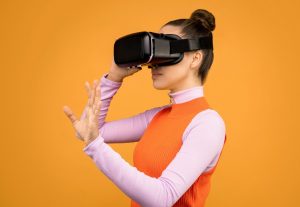Smart City Ecosystems: How Cars Fit In
Welcome to the age of the smart city. As technology advances and cities become more interconnected, the idea of a smart city has become increasingly popular. But what exactly is a smart city? In short, it is a city that utilizes technology to improve the efficiency and sustainability of its services and infrastructure. One key element of a smart city ecosystem is transportation, and in particular, how cars fit into this picture. In this article, we’ll explore the role of cars in smart city ecosystems and how they are being integrated to create more efficient, sustainable, and livable cities.
The Role of Cars in a Smart City Ecosystem
Cars have always played a significant role in our cities, providing individuals with a means of transportation to get from one place to another. However, with the rise of smart cities, the role of cars is changing. In the past, cars were primarily used as personal vehicles, and as a result, they added to traffic congestion and air pollution. But in a smart city ecosystem, cars are seen as a tool for improving the overall efficiency of transportation. This shift in perspective has led to a variety of initiatives and technologies that are reshaping the way we think about cars in the context of a smart city.
Shared Mobility Solutions
One of the most significant changes brought about by smart cities is the rise of shared mobility solutions. Instead of each person owning their own car, shared mobility allows individuals to use a car only when they need it. This eliminates the need for personal car ownership and reduces the number of cars on the road. Shared mobility solutions come in a variety of forms, from car-sharing services like Zipcar to ride-sharing services like Uber and Lyft. By utilizing these services, individuals can reduce their carbon footprint and help alleviate traffic congestion in their cities.
Intelligent Transportation Systems
Another key aspect of a smart city ecosystem is the implementation of intelligent transportation systems (ITS). ITS uses advanced technologies to monitor and manage traffic flow, reducing congestion and travel time. These systems utilize sensors, cameras, and other technologies to collect data and provide real-time information to drivers and traffic managers. By using ITS, cities can improve the overall efficiency of their transportation systems, making it easier for cars to navigate the city and reducing their overall impact on the environment.
Innovations in Smart Cars
In addition to changes in how cars are used in smart cities, there have also been significant innovations in the design and technology of cars themselves.
Electric and Autonomous Cars
One of the most significant developments in the automotive industry in recent years has been the rise of electric and autonomous cars. These cars are designed to be more energy-efficient and environmentally friendly, making them a perfect fit for smart city ecosystems. Electric cars produce zero emissions, while autonomous cars use advanced technology to optimize their routes and reduce traffic congestion. As smart cities continue to evolve, we can expect to see more of these types of cars on the road.
Connected Cars
Another innovation in the world of smart cars is the concept of connected cars. Connected cars utilize technologies like GPS, internet, and sensors to communicate with other vehicles and the city’s infrastructure. This allows for real-time traffic updates, optimized routes, and improved safety on the road. In a smart city, connected cars are not only beneficial for the drivers but also for the overall efficiency of the transportation system.
The Future of Cars in Smart Cities
The integration of cars into smart city ecosystems is still in its early stages, but the potential for the future is exciting. With the rise of electric and autonomous cars, connected cars, and shared mobility solutions, cities have the opportunity to create a more sustainable, efficient, and livable environment. Some cities have already begun implementing these changes, such as Tokyo’s plans to have all cars be electric or hybrid by 2050. It is clear that cars will continue to play a crucial role in smart city ecosystems, and as technology advances, we can expect to see even more innovative and sustainable solutions in the future.
In Conclusion
Cars have long been a staple of our cities, but in the age of the smart city, their role is changing. By utilizing shared mobility solutions, intelligent transportation systems, and innovative smart cars, cities can create more efficient, sustainable, and livable environments. As technology continues to evolve, we can expect to see even more exciting developments in the integration of cars into smart city ecosystems. It’s an exciting time to be living in a city, and with smart cities on the rise, the future looks bright for both our cities and our cars.




